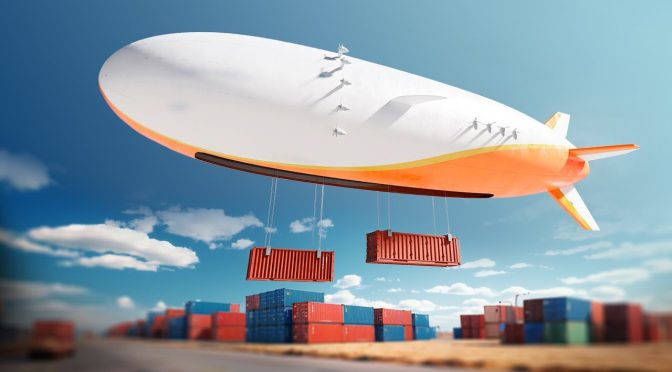Based on the video titled “Should Airships Make a Comeback?” by Veritasium, this article delves into the potential resurgence of airships as a viable mode of transportation and their potential impact on various industries.
Contents
- The Potential of Airships
- The Physics Behind Airships
- Types of Airships
- Applications Beyond Cargo
- Challenges and Considerations
- The Road Ahead
- The video
The Potential of Airships
Airships, often viewed as relics of the past, are being reconsidered as a sustainable method of transport. These “trucks of the sky” could transport cargo across oceans in approximately a week, a significant reduction from the month-long journey of freighters. Notably, airships could achieve this at a fraction of the cost of planes and with significantly fewer emissions. Unlike planes, which rely heavily on jet fuel to remain airborne, airships utilize the buoyancy of lighter-than-air gas, reducing carbon emissions by an estimated 90% or more.
The Physics Behind Airships
The efficiency of an airship increases with its size. The lift an airship achieves is directly proportional to the volume of its lighter-than-air gas, making lift proportional to the cube of its radius. In contrast, drag, which affects the airship’s movement, is proportional to its radius squared. This disparity means that as airships grow, they become more efficient. To truly harness the potential of airships as cargo carriers, we would need to construct the largest airships the world has ever witnessed.
Types of Airships
There are three primary types of airships:
- Blimps: Essentially balloons with gondolas and motors. Their shape is maintained by over-pressurization.
- Semi-rigid Airships: Similar to blimps but with added structural support.
- Rigid Body Airships: These have an internal structure and are filled with gas cells containing lifting gases like hydrogen or helium. They are the most scalable and are best suited for the cargo market.
Eli proposes a 388-meter long rigid airship capable of carrying 500 tons of goods at speeds of 90 kilometers per hour. Such an airship could transport two Statues of Liberty at highway speeds. To truly revolutionize the cargo market, a fleet of thousands of these airships would be required.
Applications Beyond Cargo
While cargo transport offers a vast market, airships also have potential in luxury travel, disaster relief, and specialized transport. For instance, the Airlander 10, built by the U.K. company Hybrid Air Vehicles, aims to offer luxury trips to destinations like the North Pole or the Amazon. Another advantage of airships is their minimal infrastructure requirements, allowing them to access remote or disaster-stricken areas. They can also transport large structures, like wind turbine blades, that are challenging to move by road.
Challenges and Considerations
Building large-scale airships presents numerous challenges. These include the need for massive hangars, the choice between hydrogen and helium as lifting gases, and the complexities of certification. Additionally, there’s the challenge of maintaining equilibrium when offloading cargo, as releasing a heavy load would cause the airship to rise rapidly. Current solutions involve replacing the weight being offloaded, but more innovative solutions are being explored.
The Road Ahead
The resurgence of airships presents a transformative shift in transportation, offering sustainable and efficient solutions for cargo and luxury travel. These vessels, once relics of the past, now stand at the forefront of innovation, promising reduced emissions and access to remote areas. With challenges like infrastructure needs and lifting gas choices, the journey to mainstream adoption is complex (yet the potential rewards are monumental). As companies globally invest in next-generation airships, the horizon looks promising for these majestic skyward giants.
While the challenges are significant, the potential rewards are immense. Several companies worldwide are currently developing the next generation of airships, focusing on niche markets where airships offer unique advantages. As these technologies mature, the dream of airships becoming the “trucks of the sky” may become a reality. The future might see our skies dotted with these majestic vessels, reminiscent of a bygone era but equipped with modern innovations.

